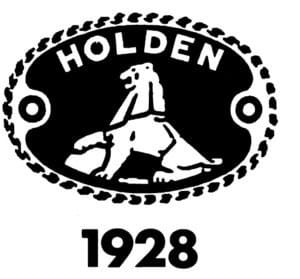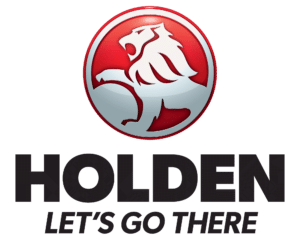“People should see change as an opportunity rather than a threat. If you’re going to be there for a long time, you have to constantly reinvent your company” –Yvon Chouinard, Patagonia
Australian car maker Holden is leaving its decades-old “blokey” image behind. No more “football, meat pies, kangaroos and Holden cars”, as the famous jingle went. The ambassadors now include actress Claudia Karvan, chef Luke Nguyen, and fashion entrepreneur Jane Lu. A new logo and five new cars have been unveiled, along with a new jingle — a pop song by 24-year-old record producer and musician Flume.
“Holden needs to maintain a very fresh and contemporary look in the market place. The current program has served us exceptionally well but it’s time to move on,” Holden executive director of sales Peter Keley said.
This may mean giving up the rich history and heritage Holden has built over the decades. The company started manufacturing cars in 1856 in Port Melbourne, Australia. It has released iconic and well-loved vehicles throughout the years — the Kingswood, Monaro, and Commodore; it was the centre of the golden years of racing in the 1970s and 1980s; it dominated the Australian automotive landscape, selling one Holden in every five cars in 1991; and at its peak in 2002, has sold almost 180,000 vehicles.

Holden’s Logo in 1928 (source: Holden)
Holden was the top-selling brand in Australia until Toyota took the title in 2003. All things considered, the brand had an amazing run. But as a business, Holden needs to keep roaring.
When an icon stops selling
It was never the same again for Holden. In 2011, the Commodore was outsold by Mazda 3, the first time an imported car toppled the local sales charts. The following year saw only 30,000 Commodore sales. In 2013, Holden made a tough decision — it will stop manufacturing cars in Australia come 2017.
In spite of Australians’ acknowledgement of Holden and Commodore as cultural icons, our tastes in vehicles have changed. Whereas it used to be all family station wagons and fleet sedans, consumers now embrace small cars, SUVs and utes.
In order for a manufacturer to sustain the business, they have to produce a minimum of 200,000 cars a year. To become Australia’s top-selling car, they have to sell at least 45,000 units. But because Australia has more makes and models than any other developed country, it became impossible for Holden to reach the numbers.
“It’s a fact that Holden hasn’t kept pace with what our customers or consumers want,” Mark Bernhard, Holden’s managing director, said. “But the good news for the company, for the staff, is that we know we make money as an importer. And we did that with one of the oldest portfolios of cars in the country. By this time next year, we will have one of the newest portfolios of cars in the country. We will have the pick of GM’s best products from around the world. The change is compelling.”
Out with the old, in with the new
As the company transitions to a full-line importer in 2017, they have also changed everything that makes Holden, Holden. “This is more than just a brand relaunch,” Bernhard said. “This is a complete company transformation, from a local car manufacturer to an importer.”

Holden’s Old Logo (Source: Holden Tuggerah)
From selling cars, Holden now sells lifestyle, and promises customers a whole new experience.
First, they changed their lion icon from red to a chrome finish that is consistent with the badging on all their vehicles. “We’ve also updated the font, moving to a more sophisticated upper and lower-case combination,” said Natalie Davey, Holden’s general manager of marketing communications and digital. The changes lend the brand a unique, informal, and modern feel.
They have released visual campaigns for their two new cars, accompanied by the soundtrack created by four-time ARIA winner Flume. Davey said they chose his work because it is associated with the new audience they want to capture.
In similar fashion, Holden also picked five high-profile and influential people to front the campaign — actors Claudia Karvan and Matthew Le Nevez, chef Luke Nguyen, surfer Nikki Van Dijk, and fashion entrepreneur Jane Lu. “They capture the very essence of today’s Australia — real, clever and bold Australians making their mark here and on the world stage,” Davey said.
Heritage redefined
Davey said the car maker’s rebrand honours the company’s 160-year heritage but is redefined to keep up with the current trends. Their goal is to make consumers re-think their perceptions of Holden without losing the brand’s history and heritage.

Holden’s New Logo (Source: Logo Designer)
“Holden has always been a brand that engenders passion and loyalty, but we must move with the times. Our history is precious to us, but we also need to challenge convention and redefine what Holden is and stands for in today’s Australia.”
Why companies rebrand
On average, organisations and brands change their corporate identities once every seven-to-10 years, according to VIM Group. Usually, there is only one main reason for making the change, but a rebranding project can be a result of several factors. Here are five common reasons why companies rebrand:
-
Change of Business Ownership —Mergers, acquisitions, and demergers often result in immediate rebranding. This is usually done to ensure that a company is no longer part of an organisation, to comply with legal requirements, and to make the change visible and known to everyone.
-
Changing Markets — As with Holden’s situation, their brand, products, and positioning no longer attract customers. The changing market and trends force companies to reinvent themselves to make consumers want to buy again. Holden’s move aims to attract the young and elite high-earners as reflected by their message and ambassadors.
-
Bad Reputation — Naturally, brands would not want to have or be associated with a bad reputation. Overhauling the brand, often along with other aspects of the organisation such as leadership changes, product improvements, etc. ensure that negative associations with the brand are dispelled.
-
Outdated Image — Companies need to modernise to appeal to the ever-changing consumer perception. This rebrand could simply require a touch up on the surface, such as a fresh logo, colour palettes, and font or could be a big change that involves messaging and brand persona.
-
Repositioning — Changing a company’s positioning and brand promise often involves new strategies, product, target market, customer service, corporate identity, and so much more.
Keeping up with the times is not easy. It involves adapting to new trends and changing a well-known identity. A rebrand requires thorough planning. If you are considering a brand refresh, consider having Bambrick onboard. We have helped launch successful PPC, Social and SEO campaigns for over 500 brands in Brisbane and across Australia. Talk to us about your next digital marketing campaign today.